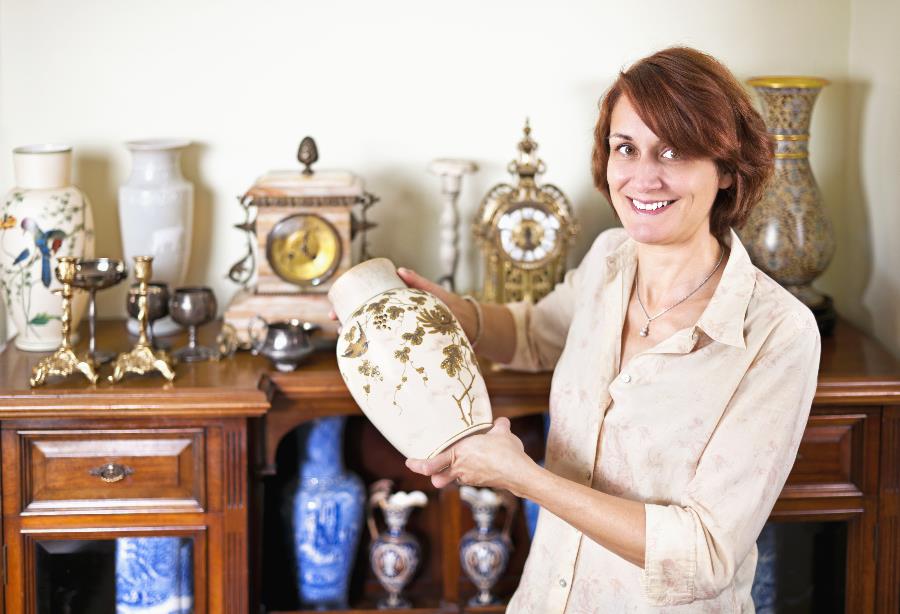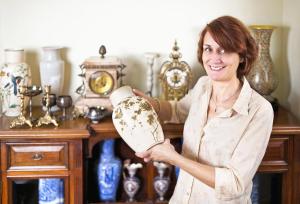How to Know the Value of Your Antique
How to Know the Value of Your Antique

July 6, 2015
Hit reality television shows have brought storage auction entertainment to peoples living rooms around the world, displaying how turning mere minutes of storage unit viewing can become profit. On Storage Wars, professional buyers are allowed to view the contents from the door for only 5 minutes, and make a purchase decision based on what they […]
Hit reality television shows have brought storage auction entertainment to peoples living rooms around the world, displaying how turning mere minutes of storage unit viewing can become profit. On Storage Wars, professional buyers are allowed to view the contents from the door for only 5 minutes, and make a purchase decision based on what they can see. They then try to turn a profit for the unit they purchase. As more and more people tune in for the excitement, many may be wondering what valuables or antiques could be lurking in their own basements, attics and self storage units.
Identifying items as valuable isn’t as easy as it seems. If you want to know if your antiques are valuable, check out these signs from Total Storage Solutions.
What Makes an Antique Valuable?
There are several qualities that add value to antiques. We’ve summarized the 5 qualities that we find the most important.
Rarity
There are a few questions that you should ask yourself when considering the rarity of an item:
- How many of the item were made?
- Does the piece feature a rare or uncommon design for this type of antique?
- Is the subject matter or style uncommon for a particular artist or manufacturer?
- Has the piece been reproduced or is it difficult to do?
Usually, the fewer there are of a singular item, the rarer it is and more valuable. Even items that have flaws or mistakes in design are considered to be rare and valuable. For example, stamps generated with color distortions or without perforations are considered rare and people will pay more for these imperfections. The only way to know how rare an item is, is to research it. Visit an auction house for an auctioneers opinion, look for common collectibles in price guides, check on-line catalogs, or get a valuation from an antiques dealer.
Condition
Damaged items won’t sell as well as antiques that are in good condition. The devaluation due to damages will vary item by item. While a minor chip can significantly devalue a piece of glass, it doesn’t have the same effect on a piece of porcelain. Look out for these flaws when examining antiques:
- Breaks and tears
- Scratches
- Dings and gouges
- Cracks
- Chips
- Fractures
- Missing parts
- Discoloration
- Signs of repair (running paint, glue, mismatched screw or nails, or putty)
History or Provenance
The history of the item – or the provenance – can also affect the value. Even everyday items can have value if they were passed on from famous people. Look into any family items that have been passed down for several generations. The history of an item is important for identifying forgeries from genuine artifacts. If an item has a special history, acquiring proof will increase the value of the item.
Authenticity
Clearly, the authenticity of the item will have an influence on the value. If the item is the real deal, rather than a replica, it will be worth more. Identifying authenticity has become more difficult, as technology and reproductions become more advanced. Use the following tips to help:
- Time period: Many items can be made to look old, but that doesn’t mean that they are. Research the item and the corresponding time period that it came from to make sure the design elements align with the time.
- Artist or manufacturing company: Signatures help to identify and authenticate pieces, but usually aren’t enough to fully authenticate a piece. Know the types of pieces the artist or company made and make sure the elements add up before you believe any signatures.
- Type of material: Many materials can be replicated through the use of lesser quality materials. Ensure the item is made from the correct material to authenticate.
The desirability level will also affect the value. If an item isn’t currently in demand, or there are quite a few in the market right now, then the value will decrease.
Items That May be Valuable
There are several items that you should keep an eye out for:
- 19th Century Quilts
- Vintage Costume Jewelry
- Signed Letters or Autographs from famous people
- Leather-Bound Books
- Sterling Silver
- Old Watches and Clocks
- Porcelain
- Paintings
- Mid-Century Furniture
- Vinyl Records in Original Sleeves
- Bronze Sculptures
- Oriental Rugs
- Old signs, posters and movie ads
- Fine Table Linens
When questioning the value of your belongings, the best way to find out is to get it appraised. Find a reputable appraiser in your area, someone who charges by the hour rather than a portion of the item’s value. And if you plan to sell your item, never sell it to your appraiser. Its too much temptation to quote a lower value to a seller who doesn’t know any better.
If you find an antique that you aren’t ready to sell, but would prefer to pass down to your children, find a nearby storage unit to keep it in. Antique storage can help maintain the condition of your valuables so long as you don’t let it go to auction. Contact Total Storage Solutions today, and find a storage unit to preserve your valuables.




